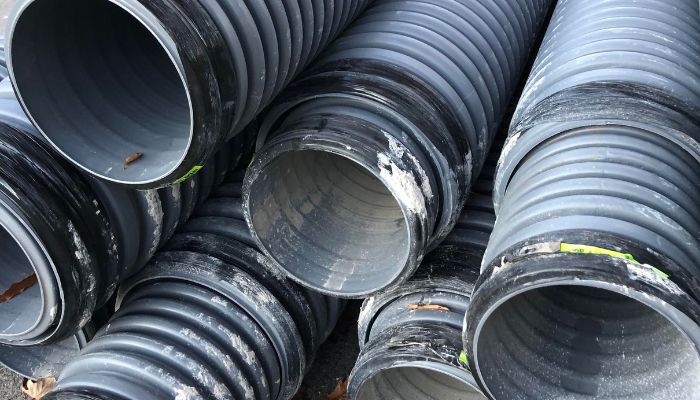French Drain Outlet Options for Sloped vs. Flat Yards
If you’re wondering which French drain outlet works best for sloped vs. flat yards, the short answer is this: sloped yards often use a daylight outlet or curb connection because gravity naturally carries water away, while flat yards typically need solutions like a dry well, sump pump, or pop-up emitter to move water effectively. In this blog, we’ll explore the best outlet options for sloped yards vs. flat yards, highlight how to install french drain systems, and explain why choosing the right setup keeps your property dry and safe. French Drain Outlet Options for Sloped Yards 1. Daylight Drain Outlet The most common choice for a sloped yard is a daylight drain. This option simply allows water to exit the pipe at the lowest point of your property where the trench opens to the surface. Pros: Simple, affordable, highly effective with natural slope. Best For: Homes with a steady downhill gradient. 2. Curb Outlet Connection If your property slopes toward the street, connecting your french drain outlet to the curbside storm drain is an option. Pros: Prevents yard erosion, integrates with city drainage. Best For: Neighborhoods with street-side drainage approval. 3. Riprap or Rock Outlet Protection When water exits forcefully from a slope, it can erode soil. Installing riprap (loose stone) at the outlet helps slow water flow and prevent damage. Pros: Low-maintenance, protects landscaping. Best For: Yards prone to heavy runoff. The Importance of Yard Slope in French Drain Design Your yard’s slope determines how much gravity helps or hinders drainage. Sloped yards naturally allow water to move downhill, making outlets more flexible. Flat yards require more strategic planning or mechanical assistance to move water effectively. This is why many homeowners consult a french drain contractor to evaluate slope conditions and recommend the right outlet solution. French Drain Outlet Options for Flat Yards 1. Dry Well Outlet A dry well collects water underground, where it gradually seeps into the soil. Pros: Discreet, effective for small to medium drainage issues. Best For: Flat yards without slope to naturally carry water away. 2. Sump Pump Discharge When gravity alone isn’t enough, a sump pump can force water out of the system. Pros: Powerful solution for severe drainage problems. Best For: Flood-prone properties or basements in low-lying areas. 3. Pop-Up Emitter Outlet A pop-up emitter allows water to release only when pressure builds up in the drain. Pros: Hidden, clean look, reduces standing water. Best For: Lawns where aesthetics matter and space is limited. Key Considerations When Choosing French Drain Outlet 1. Soil Type and Absorption Clay-heavy soil drains poorly and may require a sump pump or dry well, while sandy soil allows more natural absorption. 2. Distance From Your Home The outlet should discharge at least 10 feet away from your foundation to protect against water damage. 3. Local Regulations Many municipalities regulate where outlets can discharge, especially if connecting to storm drains. How to Install French Drain Outlets Safely Installing a french drain outlet requires careful planning: Assess the slope – Measure your yard’s grade to determine gravity flow. Dig the trench – Maintain a minimum 1% slope in the trench. Lay the pipe – Use perforated pipe with gravel backfill. Place the outlet – Choose daylight, dry well, sump pump, or emitter based on yard type. Test flow – Run water through the system before backfilling. While some homeowners choose DIY installation, working with a professional ensures long-term success and avoids costly mistakes. Local Benefits of Proper French Drain Outlet Installation For homeowners in regions with heavy rainfall or clay-rich soil, proper outlets make all the difference. Whether you’re in a suburban neighborhood or rural property, directing water efficiently protects your investment. By tailoring outlet options to your yard’s slope, you’ll: Prevent lawn flooding. Protect your home’s foundation. Avoid landscape erosion. Improve property value. Whether you live on a hill or in a flat neighborhood, choosing the correct outlet option is key to making your french drain work effectively. Sloped yards benefit most from daylight drains and curb connections, while flat yards may need sump pumps, dry wells, or pop-up emitters. If you’re planning to install french drain systems, consider consulting a professional for slope assessment, outlet design, and compliance with local drainage codes. The right solution will keep your yard dry and your foundation secure for years to come. FAQs How do you drain a French drain in a flat yard? In a flat yard, outlets like a dry well, sump pump discharge, or pop-up emitter are commonly used to move water since gravity alone isn’t enough. Do French drains need an outlet? Yes, every French drain needs an outlet because it’s the exit point where collected water is discharged safely away from your home and landscaping. How far should a French drain outlet be from the house? A French drain outlet should be placed at least 10 feet away from the foundation to prevent water from seeping back toward the home. What outlet option is best for heavy clay soil? For clay soil, which drains poorly, a sump pump discharge or dry well often works better than gravity-only outlets, since water won’t absorb quickly into the ground.



